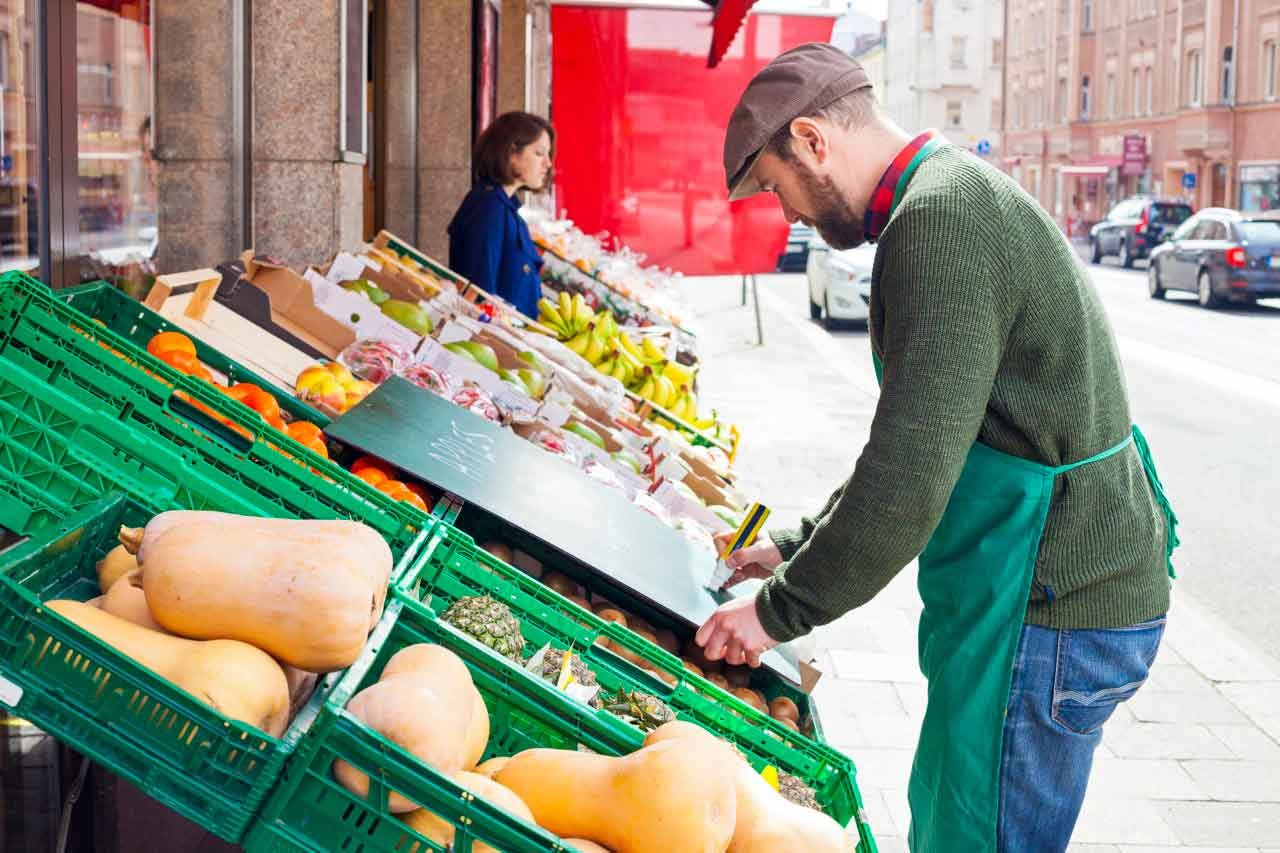Why Don’t Americans Eat More Fruits and Vegetables?

Perception, price, availability, and convenience all play a role.
The official U.S. guidelines recommend that half our daily food come from fruits and vegetables, but few of us approach that ideal. Only 13 percent of Americans eat enough fruit and only 9 percent eat enough vegetables, according to the 2015 report from the Centers for Disease Control and Prevention (CDC). Why do we neglect food that would help us stay thinner and healthier?
Some of the answers: steak is regarded as manly, vegetables and fruit aren’t available, produce is too pricey and time-consuming to stock and prepare, and vegetables and fruit can’t compete with processed foods. All of these factors add to the problem.
YOU MIGHT ALSO LIKE: You’d Be Surprised to Know What’s in Processed Foods
Manly meat
Remember that saying “Real men don’t eat quiche”? Dumb as it sounds, Americans do think that eating meat is a sign of masculinity, according to a 2012 study. "To the strong, traditional, macho, bicep-flexing, All-American male, red meat is a strong, traditional, macho, bicep-flexing, All-American food," the authors write. "Soy is not. To eat it, they would have to give up a food they saw as strong and powerful like themselves for a food they saw as weak and wimpy."
The emphasis on meat means a man is more likely to buy a hamburger than a spinach salad or bean burger (or quiche). Women are also more likely to be vegetarian; according to a 2013 Harris poll, 10 percent of American adults consider themselves vegetarian, and 59 percent of them are female.
Lack of vegetables and fruit
Even if we grant that we’re culturally biased towards a meat-heavy dinner for half the population, at first glance that doesn’t explain why men don’t also eat vegetables or why women eat so few. But our farm system is geared towards meat production, which affects the price of other food. Only 2 percent of U.S. farm acres are devoted to produce. Current farm policy subsidizes corn and soybeans, which are used as feed for livestock, biofuels, and as processed food ingredients. Farmers have few incentives to grow produce. According to Barry Popkin, a nutritionist and economist at the University of North Carolina, Chapel Hill, “the difference is such a huge magnitude of long-term investment that it would take an awful lot to make fruits and vegetables cheap like they should be.”
In fact, the country doesn’t produce as much fresh produce as we’d need, or the desired variety, if we all ate healthily. According to 2013 figures from the U.S. Department of Agriculture (USDA), 30 percent of the vegetables grown and processed for Americans each year are potatoes, which aren’t the kind of vegetables nutritionists have in mind. Tomatoes make up 22 percent, and lettuce 7 percent. There you have it: the standard lettuce-and-tomato side salad and baked potato, mashed, or French fries in a meal that stresses the steak, and ice-cream for dessert.
Convenience and price
In some areas and neighborhoods, it’s hard to find a variety of fruits and vegetables or they’re very expensive. But around the country, the perception of vegetables and fruits as pricy may have more to do with convenience. We have less time — and money — to spare for parts of the meal that we think of as “extra,” rather than the main event.
It takes a little time to cut up and steam fresh vegetables and toss a salad. It also takes more planning to use up fresh food before it goes bad.
As far as cost, when you are out of the habit of eating vegetables, you might think about buying an expensive tub of already-washed spring greens or a fruit shipped from far away — or skip the “healthy stuff.”
When vegetables and fruit are considered essentials, you’re more likely to stock up on frozen items, stop by a farmer’s market, or build cheap meals around vegetables and beans. According to a USDA study, back in 2010 it was possible to satisfy the dietary guidelines for $2 to $2.50 a day, or about 50 cents for each cup of usable food.
Competition from processed food
The explanation obvious to any parent or dieter is the availability of convenience foods packed with fat, sugar, and salt, all designed to make you overeat so you’ll spend more money. When a child sees soda, chips, and candy bars in the vending machine, the apple doesn’t taste so sweet.
Updated:
April 09, 2020
Reviewed By:
Janet O’Dell, RN